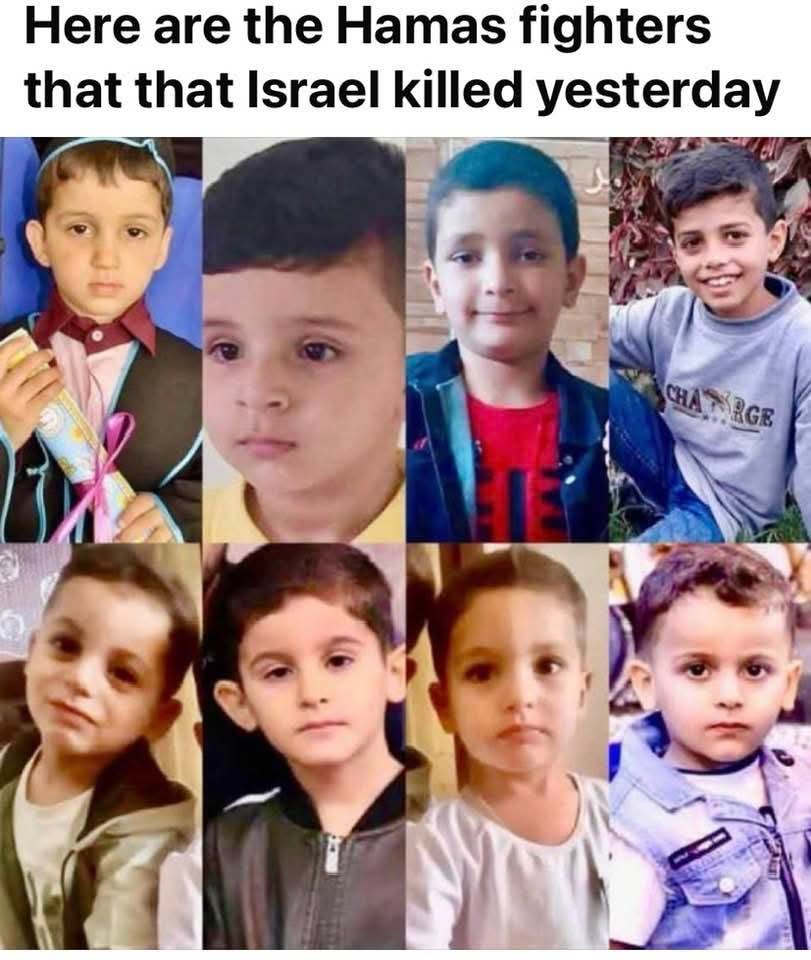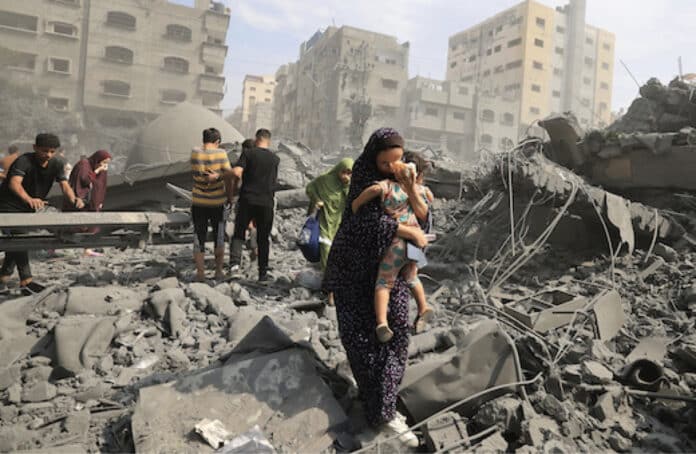In the heart of Gaza, spaces once deemed sacrosanct — hospitals, schools, and shelters — have become epicentres of destruction. The Israeli government, amid its military operations against Hamas, has repeatedly struck civilian infrastructure, justifying such actions with claims of militant activity nearby or within. But growing evidence suggests a pattern of disproportionate force and indiscriminate targeting that blurs the line between ‘military objectives’ and war crimes.
Hospitals Under Fire
One of the most disturbing patterns in the recent conflict has been the targeting of Gaza’s hospitals. Al-Shifa Hospital, the largest and most vital medical facility in the territory, has come under attack multiple times. Israeli forces have laid siege to hospitals, cutting off electricity and oxygen supplies, and bombing and storming them. The IDF claim Hamas are operating command centres beneath the hospitals, a claim repeated by officials and Israeli media. However, subsequent inspections by international journalists and rights groups find no conclusive evidence to support these assertions.
Doctors inside the hospitals described desperate conditions: neonatal units without power, surgeries conducted by torchlight, and bodies decomposing in corridors due to a lack of refrigeration. The World Health Organisation (WHO) condemns the attacks, warning that even if combatants were present, the principle of proportionality had been gravely violated.
Multiple hospitals across the region have been targeted including the Indonesian Hospital in northern Gaza, which was hit by an Israeli airstrike in late 2023, killing more than a dozen medical staff and patients. The IDF claimed militants had fired rockets from nearby — a justification that has become almost formulaic. The European Gaza Hospital and Al-Quds Hospital were also subjected to strikes or evacuation orders, despite housing thousands of displaced civilians.
As each day passes more are murdered and more lies are told.
Schools as Targets
UN-run schools, often used as shelters by displaced Palestinians during periods of heavy bombardment, have also been repeatedly struck. In October 2023, the Al-Fakhoura School in Jabalia, administered by UNRWA (the United Nations Relief and Works Agency), was bombed, killing at least 29 people — mostly women and children. Israel later stated that Hamas had used the area for military purposes but provided no direct evidence.
A month later, another UNRWA school in the Nuseirat refugee camp was targeted, despite it being publicly known that it housed over 1,000 displaced individuals. The blast tore through classrooms turned into makeshift dormitories. Survivors described blood-soaked floors and mangled bodies of children who had been asleep moments before the strike.
These are not isolated incidents. According to UN figures, more than 70 schools have been damaged or destroyed in Israeli strikes since the escalation began — a number that includes multiple facilities clearly marked as civilian shelters.

Shifting Blame, After the Bombs Fall
The Israeli military’s narrative typically follows a familiar pattern: a civilian site is bombed, the death toll rises, and then the IDF claims Hamas was operating there. Sometimes, grainy aerial footage is released, or intercepted communications are cited, but independent verification is rare — and access for international observers, highly restricted.
This post-facto justification has led to criticism that Israel is using the presence or alleged presence of militants as a blanket excuse to attack civilian areas without due regard for the protection of non-combatants. Human Rights Watch, Amnesty International, and the UN Human Rights Council have each voiced concern that such conduct violates international humanitarian law — particularly the principles of distinction, proportionality, and precaution.
Even in cases where Hamas or other armed groups are found to be operating in densely populated areas, the law does not absolve opposing forces from their obligations. “The presence of fighters does not erase the civilian character of a building,” said one legal expert at the International Committee of the Red Cross. “The rules are clear: civilian harm must be avoided, and attacks must be proportionate.”
Weaponising Civilian Presence?
There is also growing unease over how claims of “human shields” are used to absolve responsibility. Israeli officials often allege that Hamas deliberately positions itself within civilian areas — a practice condemned under international law. However, the response to this cannot be the indiscriminate use of force. The laws of war are designed precisely to prevent such escalation from causing mass civilian casualties.
Moreover, the blanket framing of any civilian infrastructure as a potential Hamas stronghold contributes to a dangerous narrative that effectively renders all of Gaza a target. This has led to calls for greater scrutiny of Israel’s targeting policies and the intelligence assessments that underpin them.
The Human Toll
Beyond legal debates lies a devastating human reality. Entire families have been wiped out in single strikes. Hospitals are no longer safe places of healing; schools are no longer sanctuaries for children. With more than 60,000 Palestinians killed — over two-thirds of them women and children, according to Gaza’s health authorities — the sheer scale of loss is staggering.
In the absence of functioning hospitals, injured civilians often bleed to death untreated. In the absence of schools, an entire generation of children faces psychological trauma and educational ruin. Displaced over and over, families now speak of “no safe place” — not even in UN compounds, hospitals, or homes marked with white flags.
Calls for Accountability
The international response has been fractured. Some Western governments have defended Israel’s right to self-defence, echoing its claims about Hamas’ tactics. Others — including South Africa, Ireland, Norway, and several Latin American states — have condemned the attacks in stronger terms, calling for an immediate ceasefire and independent war crimes investigations.
At the International Court of Justice (ICJ), South Africa has brought a case accusing Israel of genocide, specifically citing attacks on hospitals and shelters as evidence of intent to destroy, in whole or in part, the Palestinian people in Gaza. The case is ongoing but has drawn unprecedented international attention.
In summary, Israel’s repeated strikes on hospitals, schools, and shelters in Gaza cannot be viewed as unfortunate mistakes or mere collateral damage. When such attacks become routine, they demand serious scrutiny and consequences. If international law is to mean anything at all, it must apply consistently — and its breach must be met with more than diplomatic platitudes.
For the people of Gaza, however, accountability may come too late. The buildings they once relied upon — to heal, to learn, and to shelter from bombs — are now rubble. And the justifications for those bombings are increasingly wearing thin.







